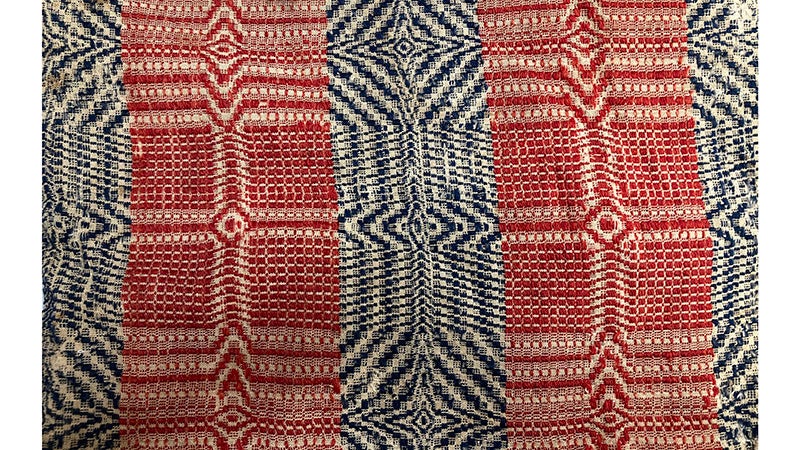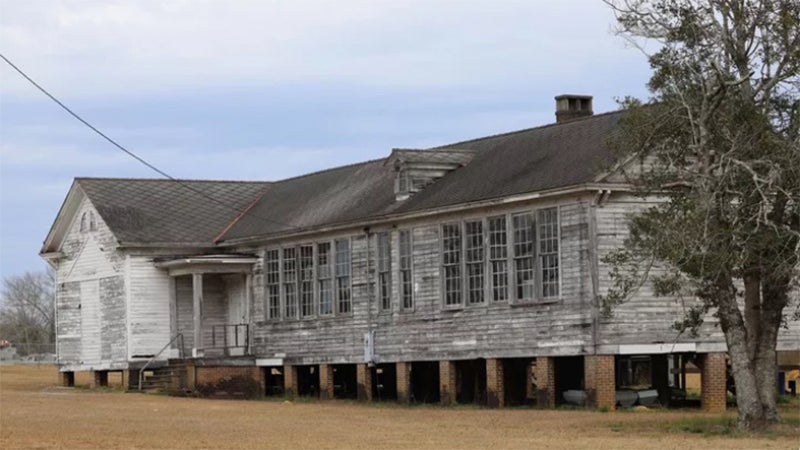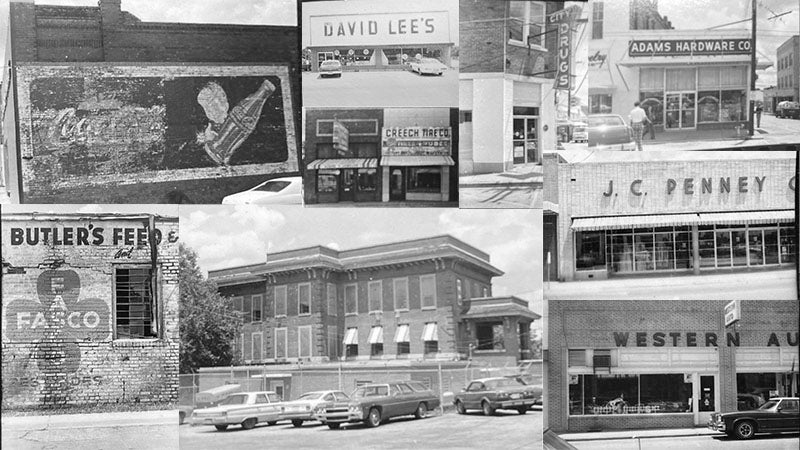Remembering Covington County veterans
Published 2:09 am Saturday, November 11, 2017
REMEMBER WHEN
Veterans Day, formerly known as Armistice Day, was originally set as a U. S. legal holiday to honor the end of World War I which officially took place on November 11, 1918. In legislation that was passed in 1938, November 11 was “dedicated to the cause of world peace and to be hereafter celebrated and known as U. S. Armistice Day.”
In 1954 after having been through both World War II and the Korean War, the 83rd U. S. Congress amended the Act of 1938 at the urging of the veterans service organizations and renamed Armistice Day as Veterans Day honoring American veterans of all wars, living and dead.
In November 1918 citizens turned out in number on the Public Square in downtown Andalusia to celebrate and to anticipate the return of the many hometown soldiers gone off to war. The old courthouse in the middle of the square had not yet been demolished even though the new Covington County Courthouse was completed in 1917. Someone who wanted to capture the spirit of the day took a picture of the crowd that gathered from the second floor of the courthouse looking east toward East Three Notch Street. Of course there was no television at that time so the citizens would have been notified of the war’s end by news on the radio or by telegram or perhaps from neighbors or business associates who heard the news first.
The 31st Alabama “Dixie Division” had been photographed in front of the East Three Notch School prior to the departing of the soldiers headed to Europe. There were early casualties of local boys including the first two – Lee Otis Battle, age 18, lost at sea in the Atlantic on the USS Cyclops and James Malcomb, age 27, killed in action in the Argonne Woods in France.
From The Opp News Historical Edition of 1973, John Burgess, Editor, wrote the headline – Covington County History, Largest Ever Published (172 pages and weighing two and a half pounds with 25 tons of newsprint).The historical accounts researched, written, and compiled over a decade by Mr. and Mrs. Gus Bryan and the newspaper staff on practically every town and community in the county were extensive. More than 4,000 photographs were borrowed that were used in this 1973 edition which paper copy is now a collector’s item, a treasure of history. Many photographs were of the collection of the late Judge R. H. (Richard Henry) Jones of Andalusia (1869-1949) who spent a great portion of his life in the late 1800s and early 1900s gathering historical data as a lifetime hobby. Editor Burgess and the Bryans gave Jones credit for the prominent role he played in making this publication possible. (Jones who came to Andalusia lived previously in the Rose Hill community near the Pilgrim’s Rest Church with his family. He was the grandfather of Richard Jones, son of Henry Edward and Merle Jones. In his adult life, he resided on South Three Notch in a home on the site of the former Social Security office.)
One of the photographs used in the publication was of a farm family in a scene probably from the late 1800s. The family members consisting of father, mother, “stair-step” children, and elderly grandparents were standing in front of their frame home with a dog trot. It was believed that the father was wearing a Civil War coat. “The saddle on the horse resembles those used in the army during the 1800s,” the caption reads.
Another article appeared in this edition that featured the four known Revolutionary War soldiers buried in Covington County according to the research by Ruby Bryan and others. These soldiers resting in our soil are William Carter, Jeremiah Dixon, John Lyle, and Samuel Williams.
Jeremiah Dixon participated along with a Mr. Mason surveying a line which later became known as the Mason-Dixon line. Most of the Dixons living in Andalusia today are descendants of Jeremiah Dixon.
Samuel Williams who resided in the county at age 86 was a Private according to the Alabama State Department of Archives and History, but his date of death was not known at printing time in 1973. Williams is believed to be buried in the Straughn area.
John Lyle (or Liles) served in the American Revolutionary War as Captain of Foot and later Captain of Horse and resided in the county at age 84, but the exact time of his death was not known at time of publication. It is believed that he is buried in the southwest part of the county. (I suppose that is better than being Captain of the Head which one WWII soldier wrote home to his mother here in Andalusia and told her about his promotion. She went around spreading the word to all her friends and everyone in town that her son had been made “Captain of the Head” (the latrine)!
William Carter was a member of General Green’s Brigade and participated in a number of skirmishes. He died in Covington County in 1824. (There are many Carters around this county that are bound to be descendants of William Carter.)
In E. P. Rodwell, Jr.’s “A Short History of Florala,” Rodwell wrote, “One of the first settlers to make his home in what is now the corporate (city) limits of Florala was James Edwin Hughes. He arrived in Florala by ox cart in December of 1865 after the ending of the Civil War. While serving in the Confederate Army, Hughes had traded for a 160-acre tract of land from a soldier in his company who was from Covington County. The man who was anxious to get from under this load and who had bargained for the 160 acres from the government for $15.00 swapped the land for a pair of oxen. This tract is now the central part of the City of Florala. Mr. Hughes was known as the “Daddy (Father) of Florala” and died in 1936 at the age of 97.
A significant photograph from the World War II era shows the Lions Club and the Boy Scouts posing on Court Square with the Prestwood building in the background publicizing their project to gather aluminum for the war effort. They are displaying a poster or banner which reads “DEPOSIT ALUMINUM HERE, HELP YOUR GOVERNMENT DEFEAT DICTATORSHIPS.” (To my knowledge, everyone in that photo is now deceased including, to name a few, Jess Merrill, Raymond Shreve, Laurin Avant, Harold Avant, Abner Powell II, Sheriff Tom Head, Emmette Foreman, Luther Taylor, Jr., John Boyette, Richard Kearley, Jr., Wendell Taylor, and Jimmy Taylor.)
Another photo found in LBWCC instructor Kristy White’s book, “Images of America – Andalusia” is captioned, “When the nation urged citizens to support the war effort by donating all metal products, Mayor J. G. Scherf led the effort by removing the iron fence from the perimeter of his estate, Springdale,…After the war, Scherf had the fence rebuilt.”
The Covington County Veterans Memorial Park was dedicated on Veterans Day 2004. The 42-foot stainless steel obelisk on black granite pedestal designed and constructed by the late William Merrill located behind the Andalusia City Hall is now a landmark. Names of soldiers who have lost their lives defending the nation in various wars and conflicts are engraved on the pedestal. Many events on Memorial and Veterans Day have been held with parades, bands playing, soloists singing patriotic music, flags waving, and 21-gun salutes. Military speakers and other citizens who value freedom have participated.
Many thanks go to Maggie Ruth Tollison Barrow of Red Level for bringing in The Opp News 1973 History of Covington County Edition which reminds me that there are many people out there truly interested in our heritage. “Mrs. Maggie Ruth” was reared in Red Level, one of six children of William T. and Maggie Lee Manley Tollison. The Tollison farm was located near the present Highway 84 West. The children were Ned, Earnest, Helon, Claude, Maggie, and Betty. They all attended Red Level School. A few years ago, the Three Notch Museum received an artifact that is exemplary of the Tollison farm. Donated by the family, the farm table has two benches, a lower bench and a higher bench for the younger children who sat at the table for many meals. Maggie Ruth states that her father probably built the table and the benches which are still quite sturdy. She also stated that her mother was half Indian descent. Drop by the museum on Historic Central Street to view this interesting piece which paints a picture and tells a story of rural farm life “in the land of cotton,” the way it once was.
On this Veterans Day 2017, much appreciation is owed to those who served and who serve, those who died, and those who are still living who all sacrificed for the freedoms we enjoy today. Covington County can be proud of our veterans, and on this day set aside to honor so many, we can truly say that we salute you all and we REMEMBER WHEN. We shall not ever forget!
Sue Bass Wilson (AHS Class of ’65) is a local real estate broker and long-time member of the Covington Historical Society. She can be reached at suebwilson@andycable.com.








